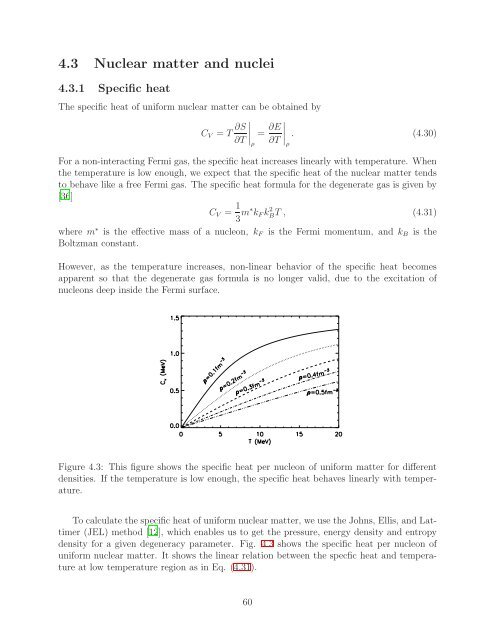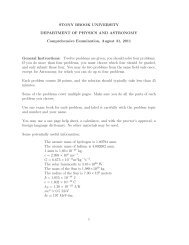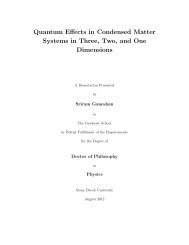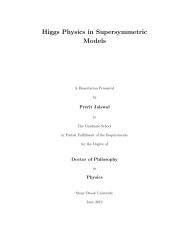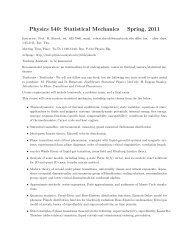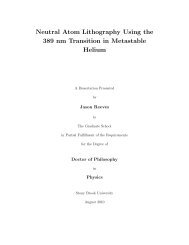Theory of Nuclear Matter for Neutron Stars and ... - Graduate Physics
Theory of Nuclear Matter for Neutron Stars and ... - Graduate Physics
Theory of Nuclear Matter for Neutron Stars and ... - Graduate Physics
Create successful ePaper yourself
Turn your PDF publications into a flip-book with our unique Google optimized e-Paper software.
4.3 <strong>Nuclear</strong> matter <strong>and</strong> nuclei4.3.1 Specific heatThe specific heat <strong>of</strong> uni<strong>for</strong>m nuclear matter can be obtained byC V = T ∂S∂T ∣ = ∂Eρ∂T ∣ . (4.30)ρFor a non-interacting Fermi gas, the specific heat increases linearly with temperature. Whenthe temperature is low enough, we expect that the specific heat <strong>of</strong> the nuclear matter tendsto behave like a free Fermi gas. The specific heat <strong>for</strong>mula <strong>for</strong> the degenerate gas is given by[36]C V = 1 3 m∗ k F k 2 B T , (4.31)where m ∗ is the effective mass <strong>of</strong> a nucleon, k F is the Fermi momentum, <strong>and</strong> k B is theBoltzman constant.However, as the temperature increases, non-linear behavior <strong>of</strong> the specific heat becomesapparent so that the degenerate gas <strong>for</strong>mula is no longer valid, due to the excitation <strong>of</strong>nucleons deep inside the Fermi surface.Figure 4.3: This figure shows the specific heat per nucleon <strong>of</strong> uni<strong>for</strong>m matter <strong>for</strong> differentdensities. If the temperature is low enough, the specific heat behaves linearly with temperature.To calculate the specific heat <strong>of</strong> uni<strong>for</strong>m nuclear matter, we use the Johns, Ellis, <strong>and</strong> Lattimer(JEL) method [12], which enables us to get the pressure, energy density <strong>and</strong> entropydensity <strong>for</strong> a given degeneracy parameter. Fig. 4.3 shows the specific heat per nucleon <strong>of</strong>uni<strong>for</strong>m nuclear matter. It shows the linear relation between the specfic heat <strong>and</strong> temperatureat low temperature region as in Eq. (4.31).60


